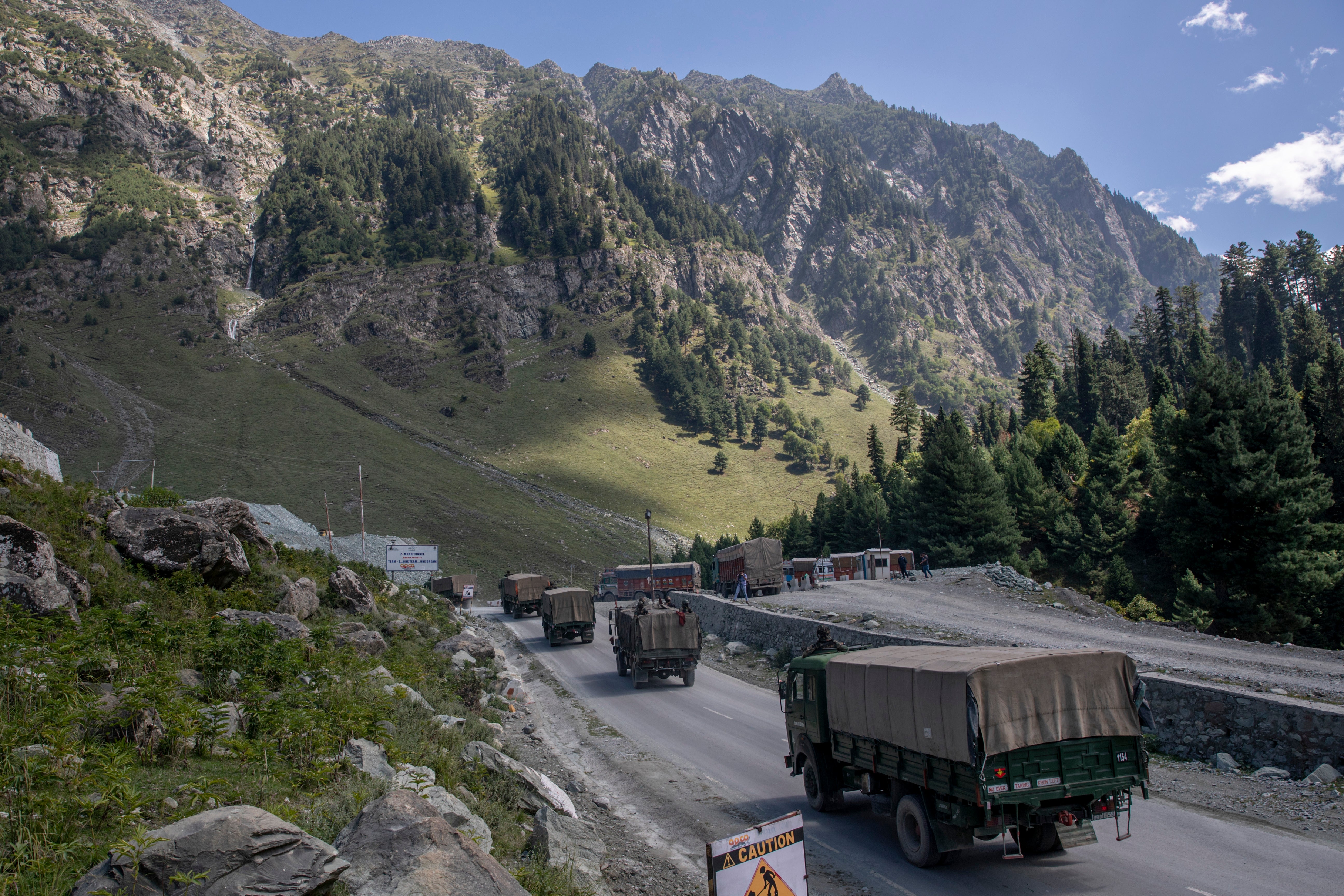China objects to Ladakh status, Indian border activities
China says India’s designation of the region along their disputed border as a union territory was an illegal move, and voiced new objections to infrastructure construction that seems to strengthen India’s position in the area

Your support helps us to tell the story
From reproductive rights to climate change to Big Tech, The Independent is on the ground when the story is developing. Whether it's investigating the financials of Elon Musk's pro-Trump PAC or producing our latest documentary, 'The A Word', which shines a light on the American women fighting for reproductive rights, we know how important it is to parse out the facts from the messaging.
At such a critical moment in US history, we need reporters on the ground. Your donation allows us to keep sending journalists to speak to both sides of the story.
The Independent is trusted by Americans across the entire political spectrum. And unlike many other quality news outlets, we choose not to lock Americans out of our reporting and analysis with paywalls. We believe quality journalism should be available to everyone, paid for by those who can afford it.
Your support makes all the difference.China on Tuesday called India’s designation of the region along their disputed border as a union territory an illegal move, and voiced new objections to infrastructure construction that seems to strengthen India’s position in the area.
Foreign ministry spokesperson Wang Wenbin also said reports of new Chinese military bases and other facilities being built on its side were “totally untrue and have ulterior motives.”
Senior commanders agreed earlier this month not to add more troops along their fast-militarizing disputed border in the mountainous Ladakh region, but appear to have made no progress in disengaging their forces from the ongoing standoff as they had earlier committed to.
It wasn't clear on what basis China rejected India's move last year to reconstitute Ladakh as a union territory separate from Jammu and Kashmir, or why it considered that illegal. However, that was likely due to the ongoing conflict over the Line of Actual Control that runs through part of the high mountain desert territory.
“China does not recognize the so-called Ladakh central government region illegally established by India," Wang told reporters at a daily briefing, saying any new construction violated a pledge by the leaders of both sides. “We are also opposed to infrastructure construction aimed at military acquisition and control in the disputed border areas."
Wang said China’s border defense forces operate on their side of the Line of Actual Control and “strictly abide by the relevant agreements." China “is committed to maintaining peace and stability in the border areas between China and India, and firmly upholds national territorial sovereignty and security," he said.
Wang did not address reports that China is increasing the building of roads and other infrastructure along its side of the border.
The standoff in Ladakh began in May and escalated in June to the deadliest violence between the two sides in decades — a clash on a high ridge in which soldiers used clubs, stones and their fists. Twenty Indian soldiers were killed and dozens of others were injured. China is believed to have also suffered casualties but has not provided any details.
The rival countries have amassed tens of thousands of soldiers, backed by artillery, tanks and fighter jets, in the Ladakh area since the deadly standoff.
After that clash, the two countries partially disengaged from the site in Ladakh’s Galwan Valley and at least two other places, but the crisis has continued in at least three other areas, including the glacial Pangong Lake.
In recent weeks, the world’s two most populous nations have accused each other of sending soldiers into each other’s territory in the Pangong area and firing warning shots for the first time in 45 years, raising the specter of a full-scale military conflict.
Relations between the two countries have often been strained, partly due to their undemarcated border. They fought a border war in 1962 that spilled into Ladakh and ended in an uneasy truce. Since then, troops have guarded the undefined border while occasionally brawling. The two countries have agreed not to attack each other with firearms.
The fiercely contested control line separates Chinese- and Indian-held territories from Ladakh in the west to India’s eastern state of Arunachal Pradesh, which China claims in its entirety. It is broken in parts where the Himalayan nations of Nepal and Bhutan border China.
According to India, the de facto border is 3,488 kilometers (2,167 miles) long, while China says it is considerably shorter. As its name suggests, it divides the areas of physical control rather than territorial claims.